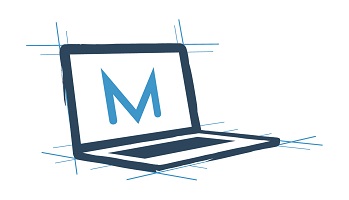Digital Natives: Changing the way we Communicate
Are we even speaking the same language?
We spend a lot of time writing user-facing documentation, only to have users ask us questions that we already answered in our communications to them. It seems like no one is reading any of what we write. Users who need clear step-by-step instructions still contact the help desk, and the users who “get it” stop us in the hall and ask us questions we covered in the documentation.
We hear the term “digital native” being thrown around a lot lately. It was first coined in 2001 by Marc Prensky, in a paper titled, “Digital Natives, Digital Immigrants.” Prensky was an educator. His paper focused on the different languages and learning styles of people raised in a world of technology, the digital natives, and people who grew up before technology became so ubiquitous, or “digital immigrants.” Prensky’s paper was targeted at educators, but for IT pros, his message carries several important lessons. He best sums up his own argument in one line: “Our students have changed radically. Today’s students are no longer the people our educational system was designed to teach.”
The biggest different between these two groups is how they engage with technology. Digital natives speak the language of a digital world. It has shaped how younger generations learn and engage with the world around them. Traditional education was very methodical. Lessons were carefully planned and calculated to teach us important lessons through repetition and rote memorization. Lessons were singularly focused. Subjects were explored separately, and students were expected to give their undivided attention to the lessons of the day. It was far from perfect but designed to help the highest number of students succeed.
Prensky noticed that around the start of the century learners changed. Traditional lessons began to fall flat. Teachers found they couldn’t communicate on the same level with their students – something had changed. Prensky refers to this as a singularity – a moment so pivotal that everything changes, and there is no returning from it. Change has always been incremental, but he noted that with increased access to technology that the pace of change had quickened. Students were constantly being bombarded by information from a wide range of sources – smartphones, video games, the internet, and social media changed the way youth consumed data.
Modern learners are experts at multitasking. They can gather information from several different sources at one time, filter out the noise, and find what’s important to them. Students can explore subjects that pique their curiosity. It’s harder to focus on topics that aren’t as important to them, so they look for resources that give them the most important details and skip long form explanations or details that don’t matter to them. Prensky described this as “learning in hypertext” – once a learner has covered the basics, they can drill down into any topic they choose. He suggests that the best way to address this is to embrace it by using future content. Future content covers not just the subject themselves, but also the “…ethics, politics, sociology, languages and other things that go with them.”
So, what does that mean for us?
Prensky wrote his paper in 2001 – 19 years ago. The same students he described as digital natives are now entering the workforce. In an earlier blog post, I shared that Deloitte suggested that 75% of the workforce would be made up of millennials or younger by 2025.
Take a minute to look at the end user-facing documentation you have written. Read it as though you were the target audience. Would your documentation fit better in a classroom in 1985, or would modern students find it engaging? Did you provide overly detailed, step-by-step instructions or do you quickly cover the basics and then offer links to learn more?
Traditionally we would write documentation that was targeted towards end users with very little technical acuity. They were new to many of the concepts, the systems, and the tools we were providing. Computers were not second nature and learning something new could be intimidating. Many of those users still exist in our organizations, so it is important that we don’t forget about them – but we must also consider digital natives and how we can enrich their technology experiences at work.
So how can we engage digital natives in our communications today?
- Skip the most basic step-by-step instructions.
Digital natives won’t read your documentation if it’s too basic. Users that need detailed step-by-step instructions are going to reach out for support regardless of how detailed your documentation is. Your time is valuable and will be better spent writing documentation that more users will find to be relevant.
- Give users instructions, but don’t get lost in the weeds.
This goes hand-in-hand with the first item on this list. If a user needs you to screenshot the Windows icon to show them how to open the start menu then your documentation will never be detailed enough. Most users understand how to open an application. Skip ahead to more relevant details or consider using a graphic to call out important functionality.
Give your users the benefit of the doubt, otherwise people may think you are talking down to them.
- Take cues from popular websites.
Most blogs, support documentation, or technical articles start out by introducing a topic. You probably read this introduction and decide whether this article includes the content you need. Your end users do the same thing. Spend a paragraph or two explaining the “why” before jumping into the details.
You can even take this one step further. If you’re spending a lot of time creating end user documentation from scratch, you’re probably focusing your efforts in the wrong area. Microsoft (and other vendors) typically have an abundance of user-facing documentation available. Much of this content is also customizable. By using this pre-canned documentation, you can focus your time writing content that more of your users will find valuable.
- Include a Frequently Asked Questions page (and make it relevant).
If you’re deploying Microsoft Intune for mobile device and application management users are going to have some questions. Users are going to want to know what personal data an administrator can see, why they need to install specific applications, and why their devices must meet minimum security controls.
Don’t bury those topics in documentation your users may not finish reading. Collect the top 5-10 questions you expect users to ask and provide concise, but well thought out answers to those questions. Keep your FAQs updated and make sure that any other common questions get added if necessary.
- Don’t be afraid to get a little technical.
This is an area I am working on. Remember digital natives “learn through hypertext.” They are naturally curious – especially when it comes to technology. Some of your users are going to want to understand the way things work, or why a specific decision was made.
If a user has always used the native mail app on their Android phone, they may want to know why you want them to install Outlook mobile. Traditionally the answer would have been, “because of security.” That answer may work for some users, but you will inevitably have someone who asks why. You can explain to your end users that their native mail app doesn’t support Modern Authentication, and if they want to know more give them a few links to understand why legacy authentication is less secure.
This will empower your end users to learn more. You will have enriched their technology experience, provided more relevant documentation, and become a more trusted advisor in the process. As a bonus, more technical content doubles as training material for less experienced help desk users that want to learn more.
- Gather stats on your documentation and adjust your plan accordingly.
There had to be a hidden workplace modernization message in this post somewhere! Here it is!
If we are moving towards modern management solutions, we have to make data driven decisions. Many of the tools we use for internal communications can track which links users are clicking on and how much time they spend reading your documentation. This will help you to identify what communications strategy is most effective in your environment. Find out what communications engage your users.What works for me may not work for you. Don’t be afraid to create your own strategy and adjust it based on what your users prefer.
As our environments evolve, so do our end users. We need to be cognizant of how our users have changed and not fall back on our old habits. We often write off questions as being a sign of users who don’t have a very high technical acuity. It is important to evaluate our communications strategy and make sure we are providing relevant information to our end users. We have to make sure that we write content that is on their level, in a form that is most engaging, and empowers our users to learn more.
Once we do that, we will indeed be speaking the same language.

